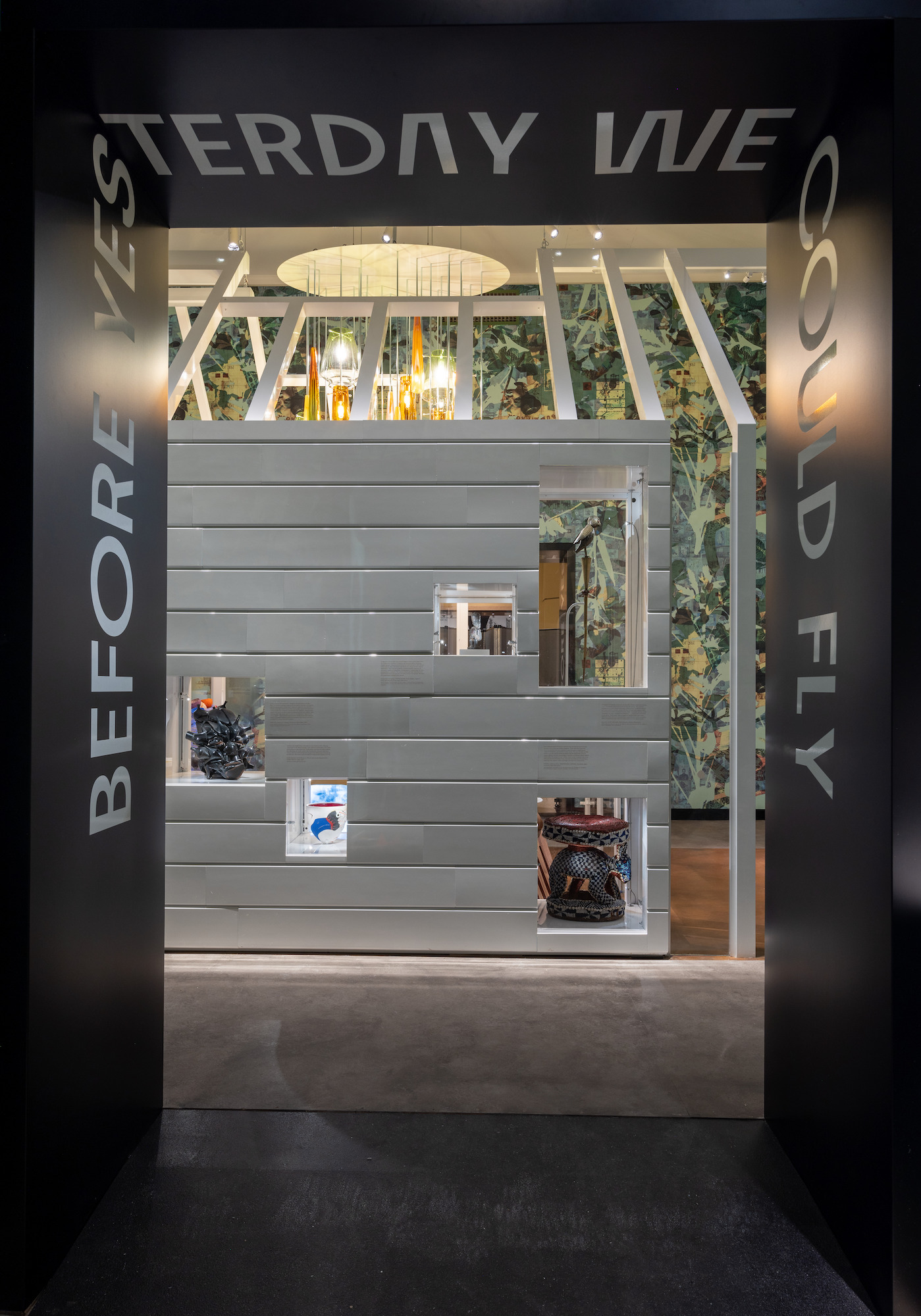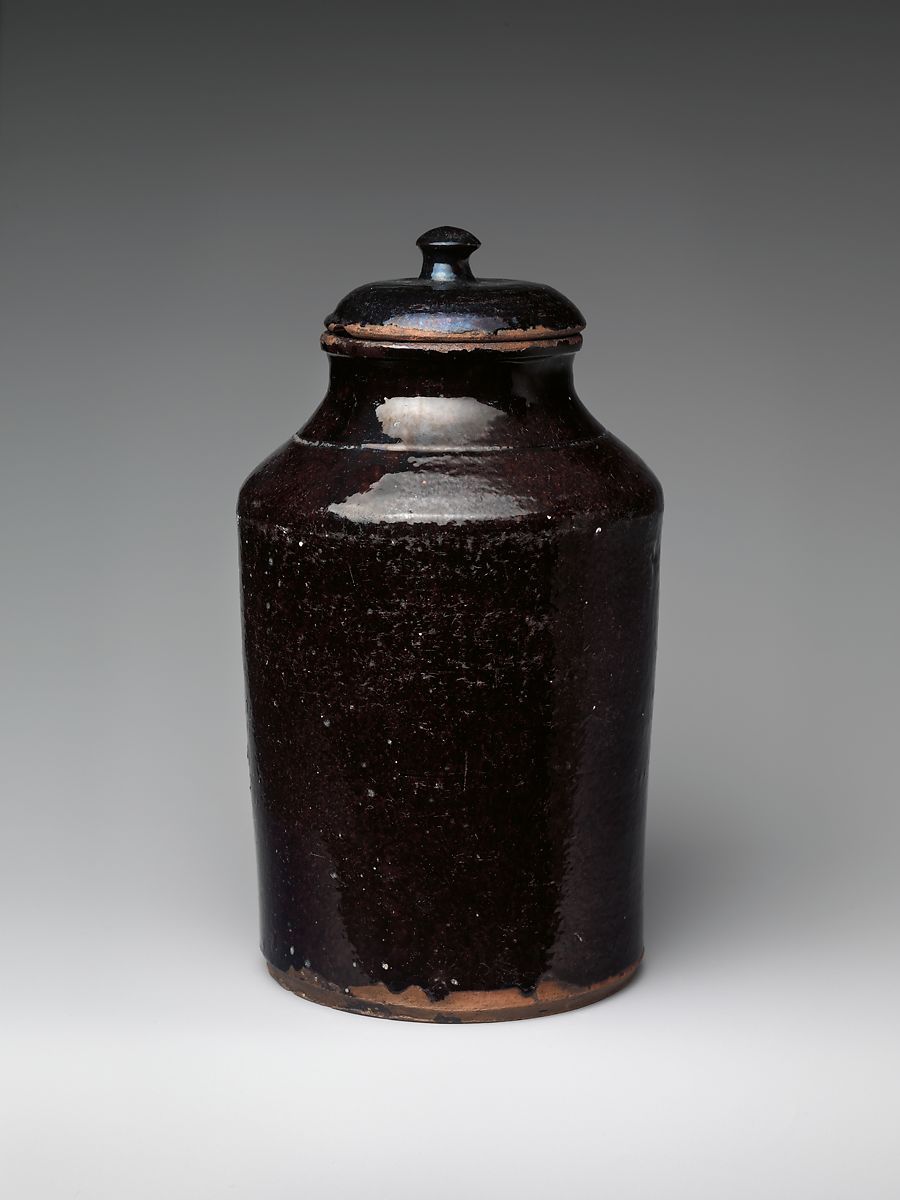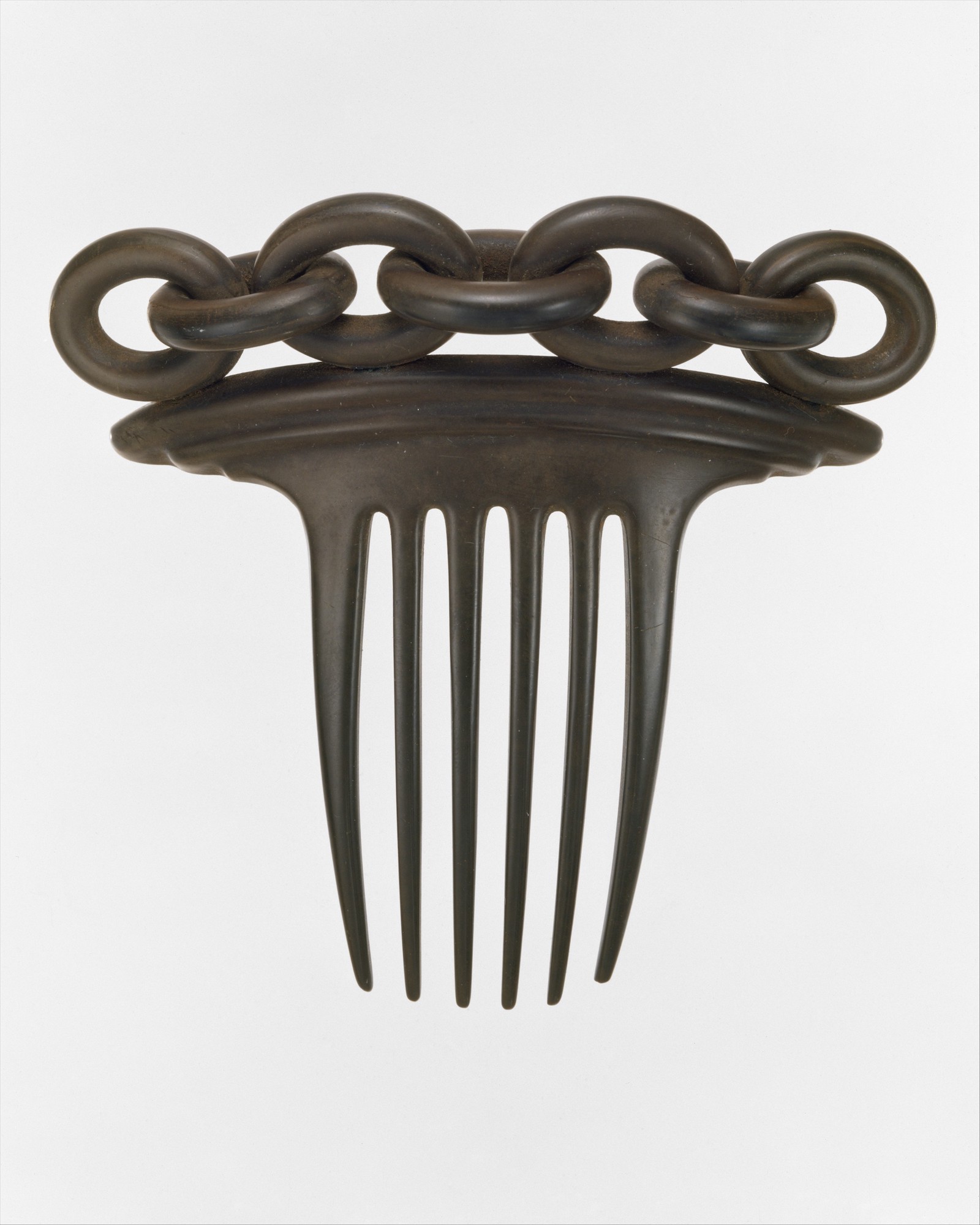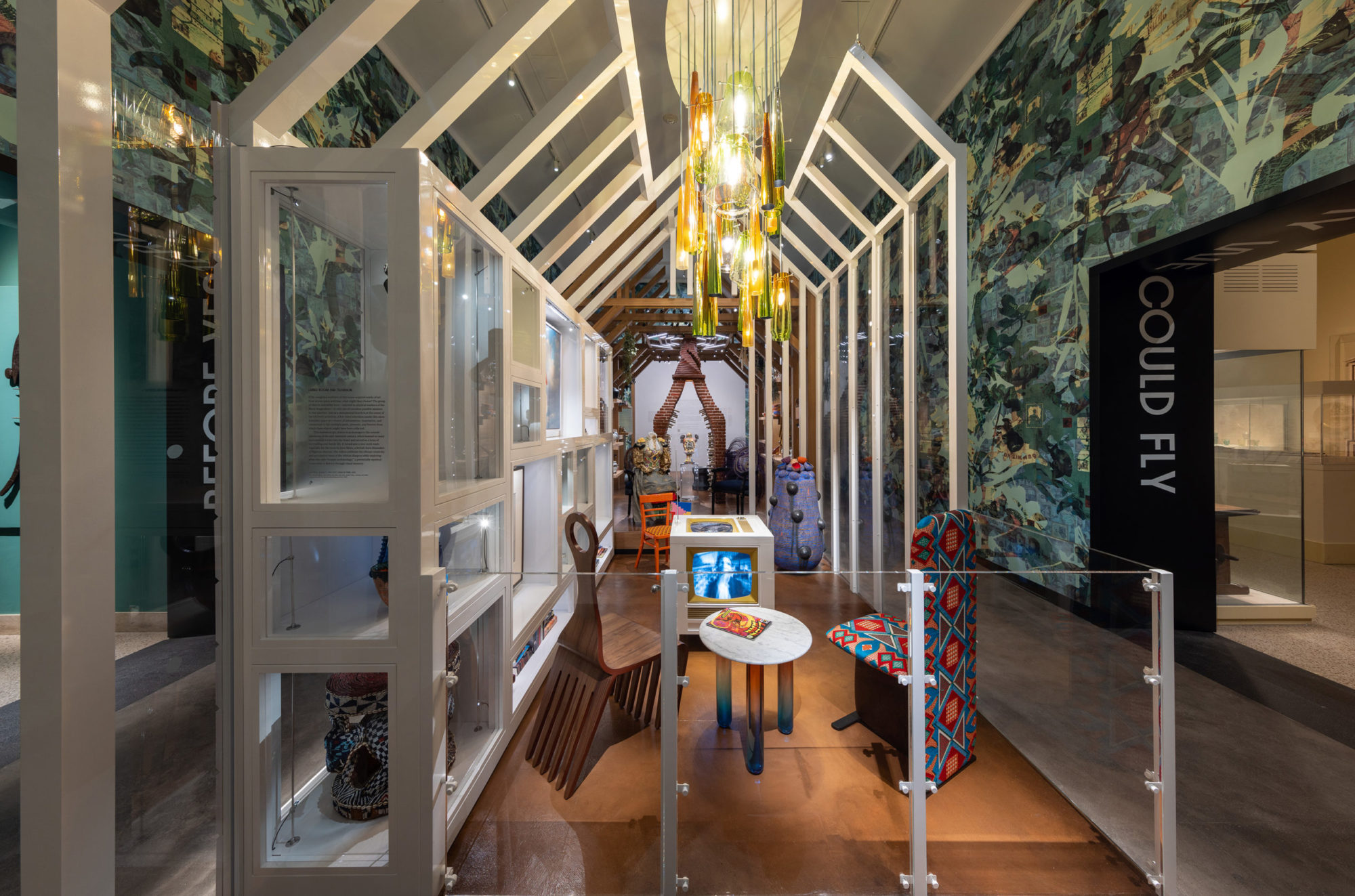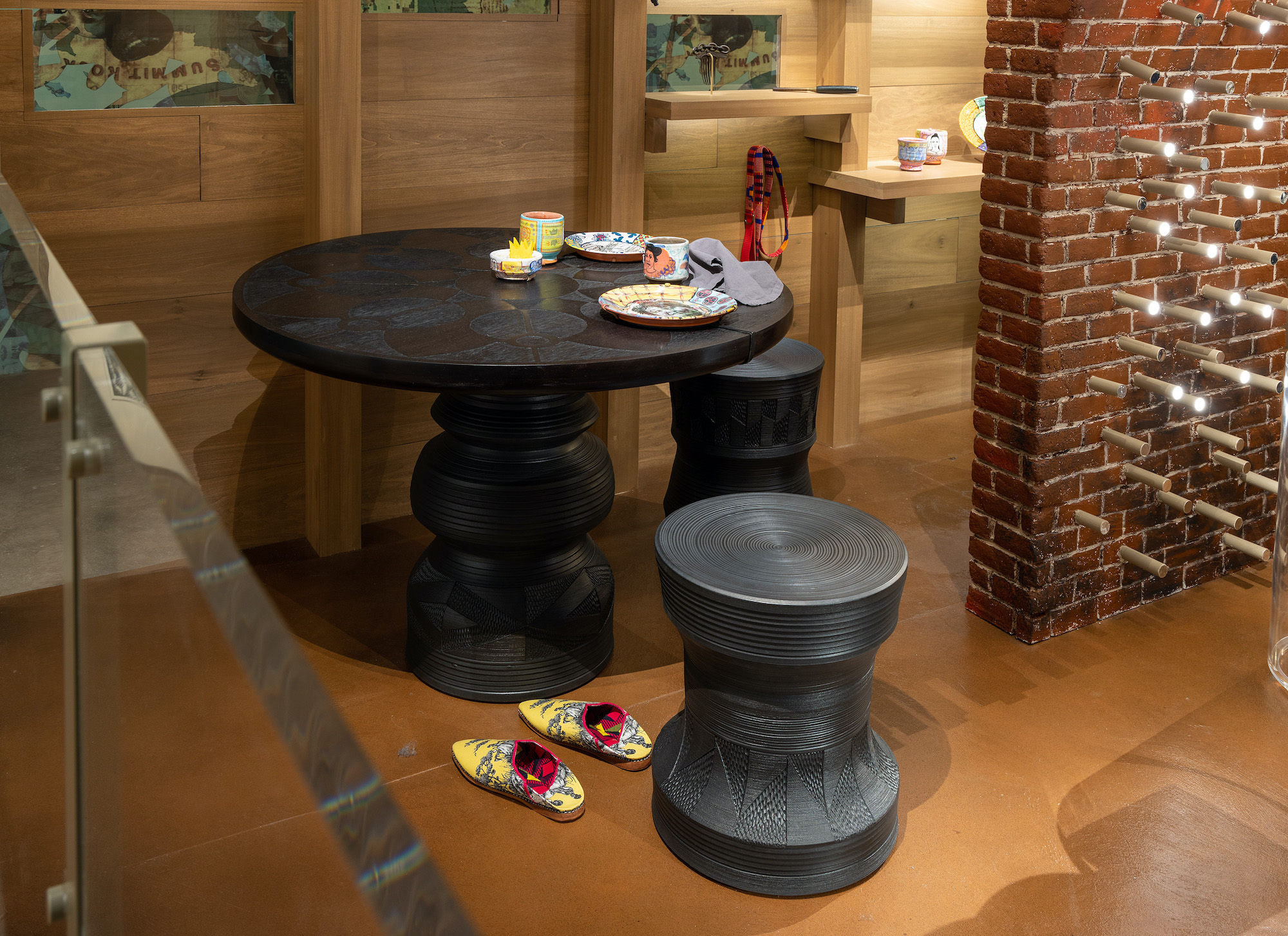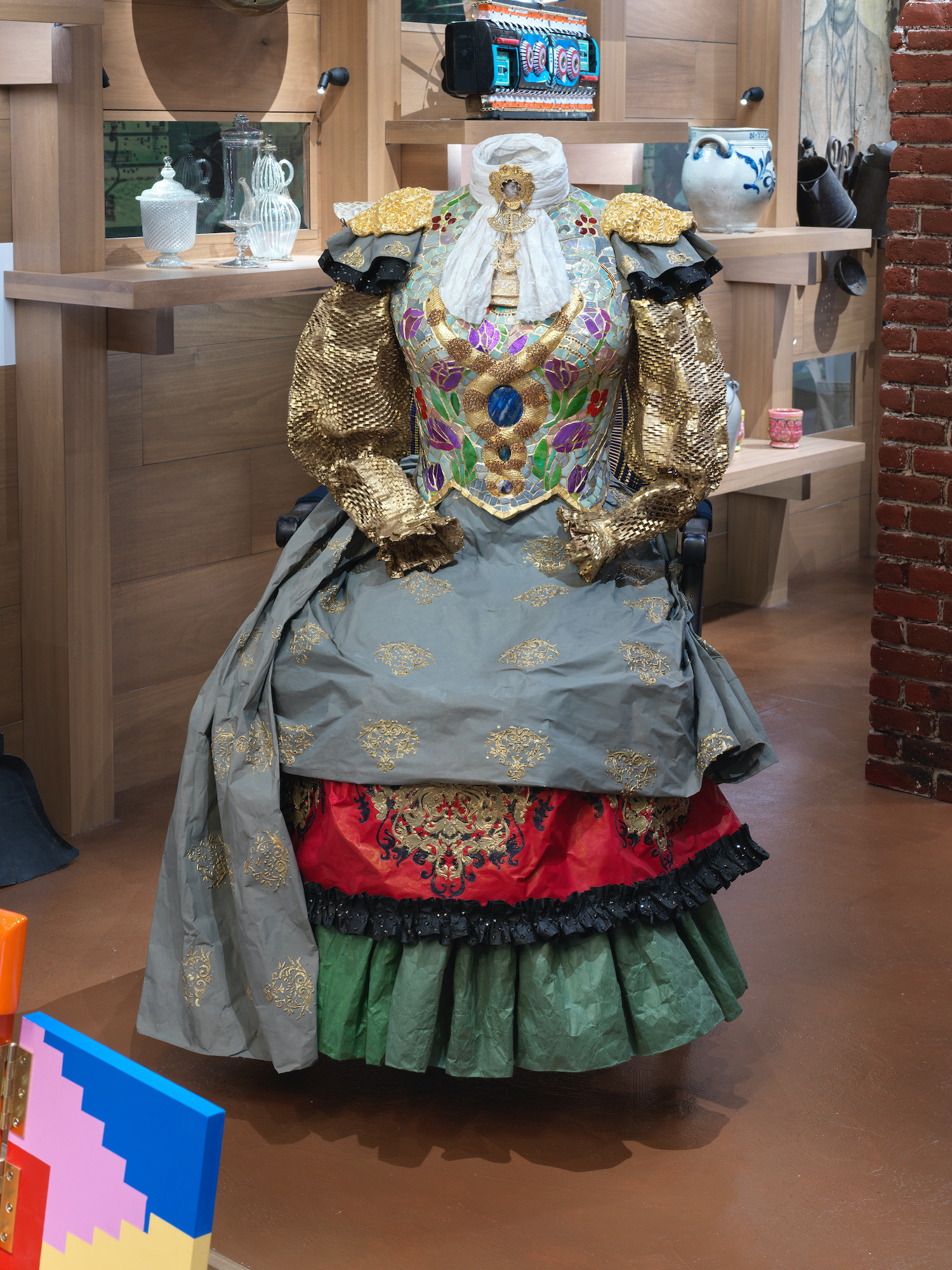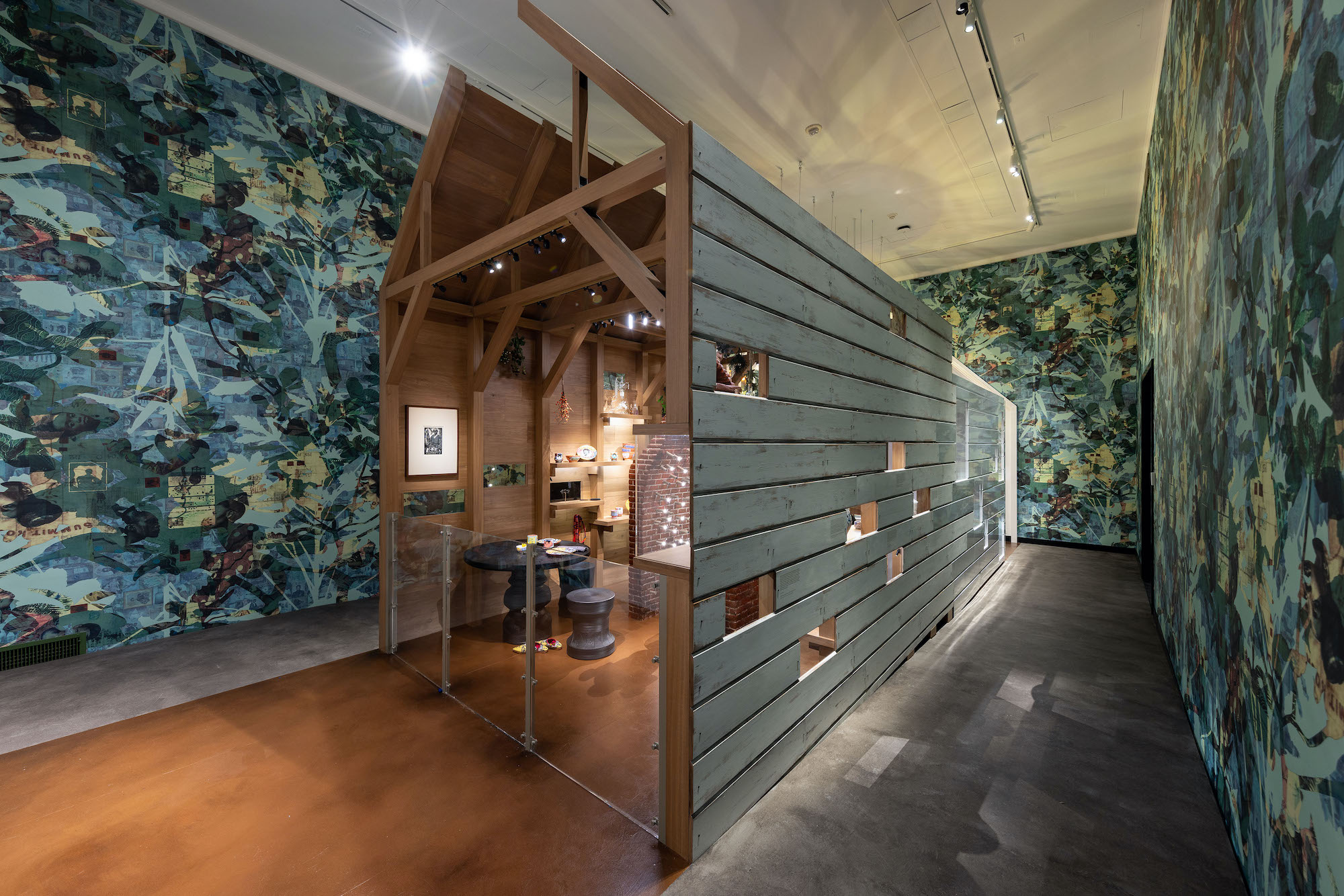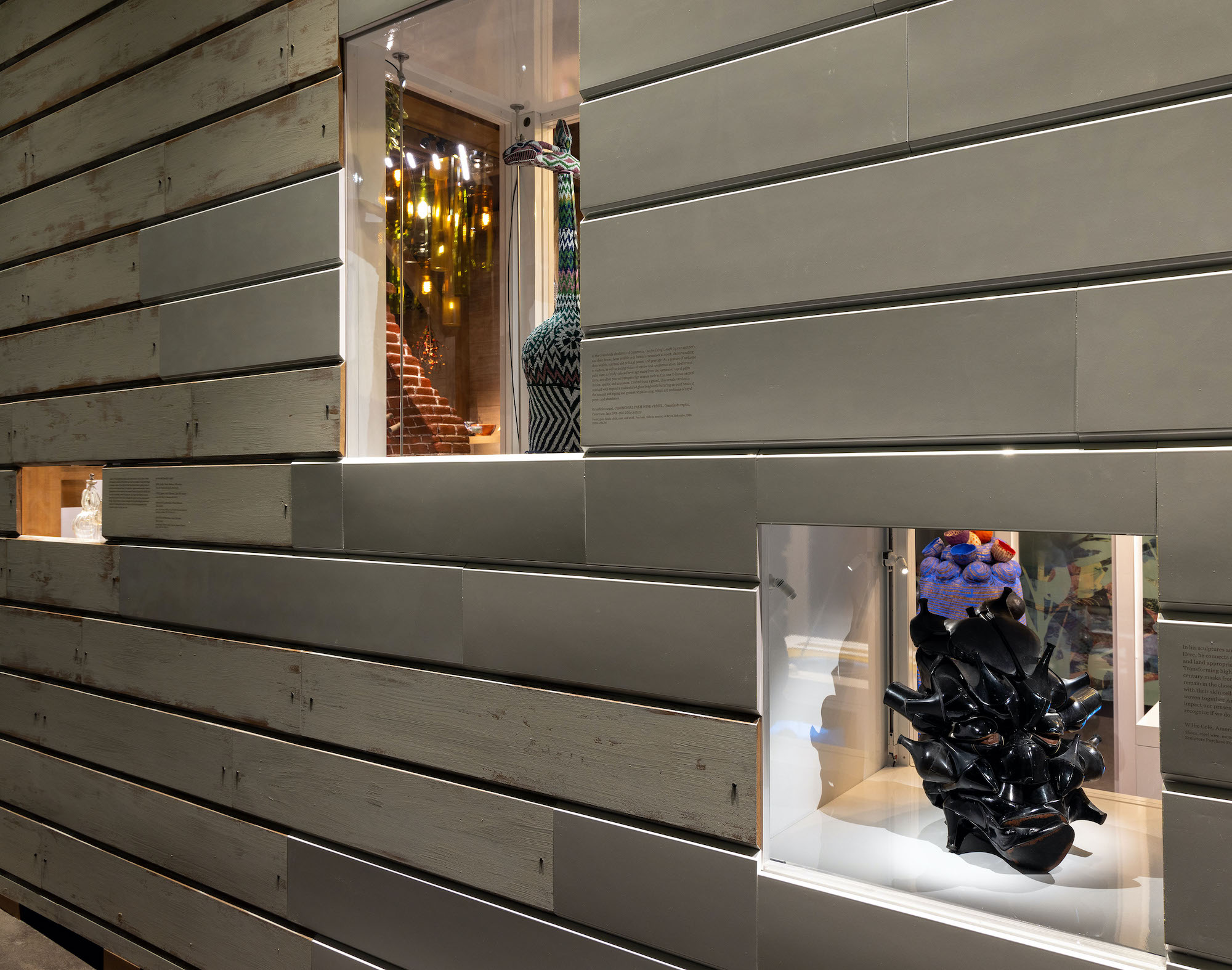Refusing the Here—Now: An Afrofuturist Period Room and Black Fugitivity in the Undercommons
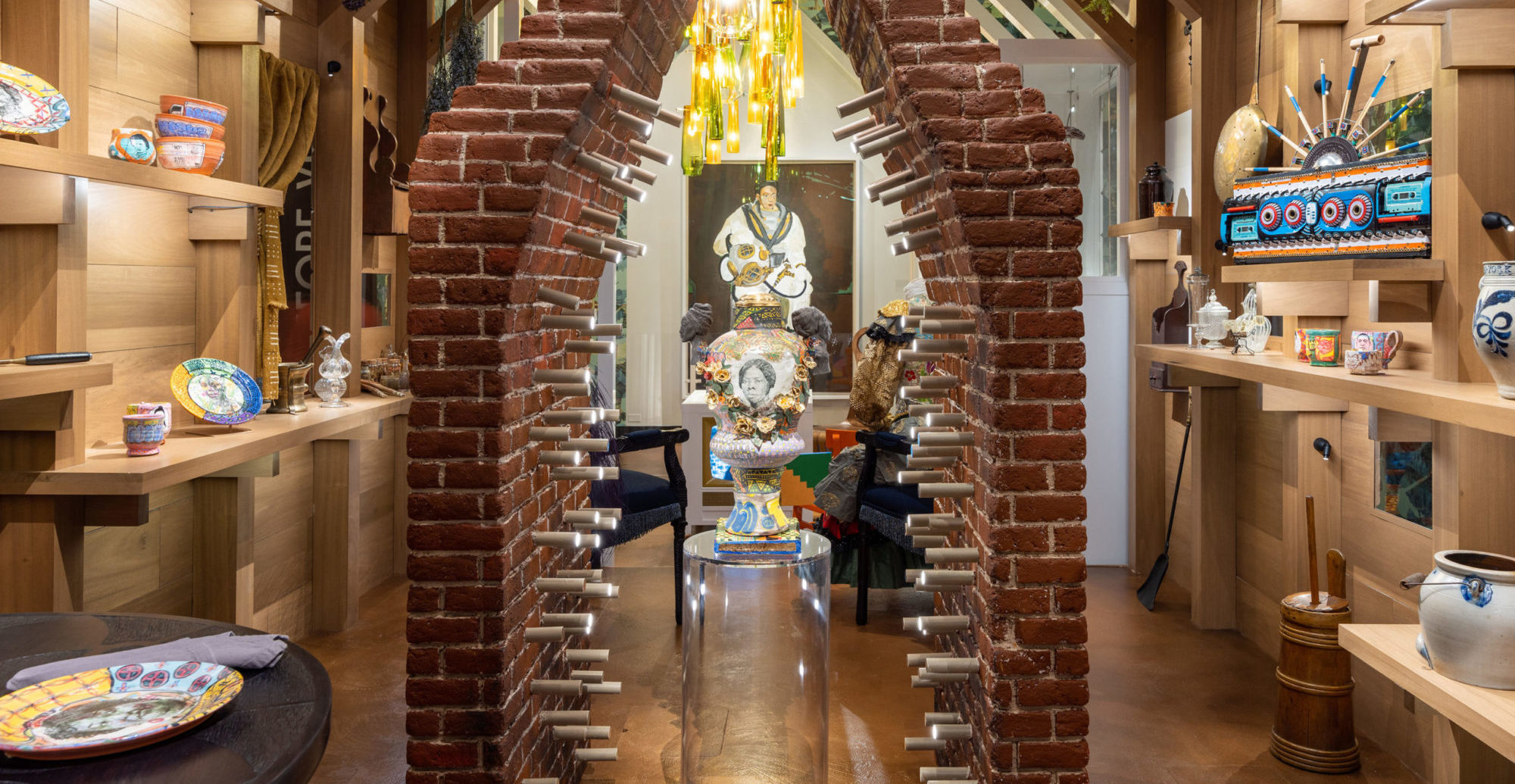
Before Yesterday We Could Fly, installation detail, 2022 [courtesy The Metropolitan Museum of Art, New York]
Share:
“I am not only here-now, locked into thinghood. I desire somewhere else and something else.”1
The words of Martinican philosopher Frantz Fanon echo the concepts that underlie Afrofuturist philosophies, collapsing the “here-now” and gesturing toward nonlinear notions of time.2 This active choice of refusal, of not being confined to a particular spatial or temporal realm—particularly one of anti-Blackness, exclusion, and violence—also undergirds the theory of the “undercommons” developed by Stefano Harney and Fred Moten in The Undercommons: Fugitive Planning and Black Study. As Jack Halberstam writes, in the book’s introduction: “The projects of ‘fugitive planning and black study’ are mostly about reaching out to find connection; they are about making common cause with the brokenness of being, a brokenness, I would venture to say, that is also blackness, that remains blackness, and will, despite all, remain broken because this book is not a prescription for repair.”3 The undercommons is a fugitive space, always present but often overlooked. As Harney and Moten describe: “To enter this space [the undercommons] is to inhabit the ruptural and enraptured disclosure of the commons that fugitive enlightenment enacts, the criminal, matricidal, queer, in the cistern, on the stroll of the stolen life, the life stolen by enlightenment and stolen back, where the commons give refuge, where the refuge gives commons.”4
At the heart of Harney and Moten’s concept, Halberstam observes, “The undercommons is not a realm where we rebel and we create critique; it is not a place where we ‘take arms against a sea of troubles/and by opposing end them.’ The undercommons is a space and time which is always here.”5 The undercommons reminds us how we relate to time or, more specifically, how Black and othered bodies are situated within nonlinear time through histories of erasure. So, with its Afrofuturist foundations, the undercommons exists beyond the here-and-now to become a space of negation and refusal.
The city of New York, which occupies Lenapehoking, the unceded homelands of the Indigenous Lenape people, is beginning to address its own histories of cultural erasure, with public projects, many of which are funded by the city, that shed light on displaced communities. Among these projects, the Metropolitan Museum of Art—a city-funded institution—recently opened Before Yesterday We Could Fly: An Afrofuturist Period Room, which addresses the history of the largely Black-owned Seneca Village through an Afrofuturist lens. On the site that became New York’s famed Central Park, which covers a sprawling 840 acres of Manhattan, once stood Seneca Village—a community of predominantly free Black Americans who had owned the land since 1825 (slavery was abolished in New York in 1827). The village was autonomous and, by 1855, was home to approximately 225 residents, most of whom were Black, with smaller communities of Irish and German immigrants.
Before Yesterday We Could Fly, installation view, 2022 [courtesy The Metropolitan Museum of Art, New York]
In the early 1850s, the local government began planning its first large-scale landscaping project, a public park where residents could briefly escape the unhealthful living conditions of the city. A law passed in 1853 earmarked land in Manhattan—775 acres that stretched south to north, from 59th Street to 106th Street, between 5th and 8th avenues—and led to the displacement of more than 1,500 residents over the next five years, including the occupants of Seneca Village.
Covered Jar, 1800s, stoneware, 9 × 5 × 4 inches [courtesy of The Metropolitan Museum of Art, New York, and Rogers Fund, 1918]
The history of Seneca Village is just one example of how the past leaves its mark upon the present, seen most readily in the ways we move through common spaces. Such policies as segregation and redlining are inextricably tied to colonial tactics of control; the colonist desire for regulation extends to the displacement of Indigenous and local communities for the creation public parks, which in turn are structured around clear sightlines and determine the ways individual bodies may gain access to a particular space. Little is known about where the residents of Seneca Village relocated or what their day-to-day lives were like. Excavated domestic items—cookware, porcelain, leather shoes, fragments of clothing—have provided subtle clues. Before Yesterday We Could Fly, at the Met, which is located just three avenues east of the former Seneca Village site, speculates on the village’s sparse history by merging objects from the past and present within the installation to propose an alternate future.
The placement of the Afrofuturist period room is something of an anomaly. Like other period rooms at the museum, which range in time from antiquity to the Victorian era, it re-creates a domestic setting. Filled with real and imagined artifacts from Seneca Village, the room can be read as a subversive intervention when compared to the other period rooms, or as a misreading of what this very peculiar historical exhibitionary form is meant to achieve.
Although the period room, as a form, is intended to showcase the historical progression of decorative arts, these rooms are as much about difference as they are about design. As the museum’s former director Philippe de Montebello put it, they provide “the opportunity to experience a sense of the way our forebears lived.” Granted, this quote was taken from 1996, more than 20 years and two directors ago, but the ethos behind the rooms seems largely unchanged. Until recently, there has been a sense that the rooms exhibit “our” history without problematizing who was allowed to be present in these spaces.
The Afrofuturist period room addresses this omission but brings up another criticism of period rooms that circulates among scholars: by their very nature, they decontextualize our understanding of how these spaces functioned within the houses or neighborhoods in which they belonged. This critique has often called into question the authenticity of these rooms, a question we might also ask of the Afrofuturist room. Looking to the notion of the commons as shared space and knowledge, we can view the installation through the critical lens of the undercommons, both in its focus upon Seneca Village as Black-owned land that was subsumed into public space, as well as the contextualization of the installation within Afrofuturist study and nonlinear history, and its placement within the larger framework of the institution.
Hair Comb, ca. 1851, vulcanite (India rubber and sulfur), 4.25 x 4,5 inches [courtesy of The Metropolitan Museum of Art, New York, a Gift of Susan and Jon Rotenstreich
Gift, 2000]
Before Yesterday We Could Fly, installation detail, 2022 [courtesy The Metropolitan Museum of Art, New York]
With so little of Seneca Village’s history intact, the installation’s structure imagines what the home of a Black resident might have looked like by fusing objects from different periods within the setting. The title, Before Yesterday We Could Fly, is inspired by Virginia Hamilton’s The People Could Fly: American Black Folktales, which situates characters within imaginary and spiritual realms of escape rooted in the storytelling of enslaved people. The reimagined house contains a small kitchen and living room; its frame is left exposed in the front, with a Plexiglas barrier in place of drywall. Its footprint nearly covers the whole of the gallery, so rather than entering the space, viewers must walk along the perimeter of the room. The house is surrounded by a wallpaper designed by contemporary artist Njideka Akunyili Crosby titled Thriving and Potential, Displaced (Again and Again and …) (2021). As an enveloping backdrop, the wallpaper features overlaid prints and photographic transfers of an 1856 hand-drawn map of Seneca Village; Black models; and the foliage of okra plants, which originated in sub-Saharan West Africa and were transported aboard ships via the Middle Passage during the slave trade. The fusion of these visual references alludes to histories of displacement, both human and nonhuman, brought on by colonization, but also the endurance of cultural traditions in the wake of extraction.
Several small windows peer into the kitchen. Items perched on the windowsill include a mid-19th-century comb with a chain-link detail recovered from Seneca Village. The comb was manufactured by the India Rubber Comb Company and made of materials harvested from West Africa. In the living room resides a diverse collection of artworks: Brooklyn-based trans-activist Tourmaline’s Summer Azure (2020), a photographic self-portrait of the artist soaring into a cloud-filled sky, dressed in all white with a space helmet to match. With its overlapping references, the photograph was produced for her 2020–2021 exhibition Pleasure Garden, which explored the history of Black-owned spaces of relaxation, enjoyment, and play, and, by extension, the relationship between land ownership and access to/agency over these spaces—dovetailing with the ownership of Seneca Village.
Elizabeth Catlett’s small linocut In Sojourner Truth I Fought for the Rights of Women as well as Negroes (1947) hangs in the kitchen. Taken from a larger series of works dedicated to Black women, Catlett’s work presents Truth as a commanding figure, with one hand pointing to the heavens and the other firmly placed on an open Bible. A vessel, accented with cobalt glaze, by Thomas W. Commeraw, a free Black American potter who worked in Manhattan’s Lower East Side during the late 18th century and the early 19th, rests on a kitchen shelf. A round table (titled Imbizo Table, by South African artist Chuma Maweni, 2018–2021) constructed of carved, glazed ceramic and ebonized Kiaat wood, with Nguni-inspired patterns, stands in the corner of the kitchen—an imagined space for communal gathering.
Before Yesterday We Could Fly, installation detail, 2022 [courtesy The Metropolitan Museum of Art, New York]
Brightly colored stoneware dishes by American artist Robert Lugo that reference graffiti culture and kente cloth designs are scattered throughout the space. They bear the likenesses of Black figures who have staked claims to the freedom of expression through their work, including Jean-Michel Basquiat, Beyoncé, Zora Neale Hurston, and Nina Simone. A vessel with the faces of Harriet Tubman and Erykah Badu rests on a cylindrical glass pedestal beneath a large, centrally placed brick fireplace that separates the kitchen from the living room.
Although the installation does away with many typical period room conventions through cross-temporal interventions, one might ask if the gesture is, indeed, an authentic reparation act by a museum that has only recently begun to reckon with its racist past. The period room might exist as part of the undercommons, but by becoming a physical and conceptual site of negation, its very existence, its aesthetic and conceptual difference, in some ways reinforces the peripheral nature of Black art within the museum. If one critiques the Met’s Afrofuturist period room through the concept of the undercommons, the installation might be seen as a nonfungible form of cultural debt for the institution. Halberstam writes:
Moten links economic debt to the brokenness of being …. He acknowledges that some debts should be paid, and that much is owed especially to black people by white people, and yet, he says: “I also know that what it is that is supposed to be repaired is irreparable ….” The undercommons do not come to pay their debts, to repair what has been broken, to fix what has come undone.6
To push back against this construction, I won’t argue that museum representation doesn’t matter; it does, in so many ways. At their most basic level, museums should embody the intrinsic values of the commons. But the very definition of the commons as shared knowledge, as Harney and Moten argue, has always been linked to systems of oppression. (They speak specifically to universities as spaces that professionalize conformity, where dissonant study is quelled, othered, or labeled unacademic.) The installation does enact the undercommons in its focus upon themes of freedom, fugitivity, and escape, but it is difficult to separate the installation from the museum at large, where there seems to be a reticence to go deeper into these subjects, to delve—with much, if any, specificity—into the spaces that are historically underlit. Although the disruption of temporal consistency takes the installation out of the realm of ethnographic display, it does, at times, create a spectacle of Black iconography, thus making it difficult to imagine how someone would have lived in this home. The museum has several degrees of ideological remove from the actual lives of Seneca Village residents, and from understanding or addressing how they occupied that site. The museum has been commended by some critics for presenting the installation, but it’s too early to determine the room’s longevity or impact within the museum, which recently observed its 150th anniversary.7
Fabiola Jean-Louis, Justice of Ezili, installation detail, 2021, Paper, gold, Swarovski crystals, lapis lazuli, labradorite, brass, ink, and resin [courtesy of the artist, and The Metropolitan Museum of Art, New York]
Criticism of the museum’s presentation or rhetorical framing of the installation should not detract from its merits. The centerpiece of the exhibition is a five-sided, futuristic CRT TV playing British-Nigerian artist Jenn Nkiru’s OUT/SIDE OF TIME (2021), a black-and-white video collage with vignettes of a Black family, seemingly separated across different temporalities, alluding to histories of displacement while performing a “cosmic archaeology.” In the artist’s words, the work functions to “draw connections across time,” an idea that lies at the heart of the installation as a fusion of Black lives past and present. The space, with its clear iconographic messages, might be more recognizable to non-Black audiences, but it also includes hidden codes that speak to deeply personal, intimate, emotional and physical connections within Black families and spaces of communal gathering that the physical construction of a home conveys.
Several recent books, including Reconstructions: Architecture and Blackness in America and In Search of African American Space: Redesigning Racism, explore the topic of Black spaces and center the relationship between built environments in the US and the African American experience as one that has been shaped, in large part, by the structures of slavery. Architect Scott Ruff, for instance, examines the National Museum of African American History and Culture, a useful model to compare with the Met’s Afrofuturist period room.
Beyond its aesthetic differences, as Ruff argues, the museum marks an ideological divergence upon the National Mall.8Its intentional placement opposite the Washington Monument, the White House, and the Jefferson Memorial indicts the very structures that embody the regurgitative history the US continuously feeds back to itself.
Ruff discusses how the NMAAHC contextualizes African American identity through architectural modes, with recreations of the slave cabin, the plantation, the shotgun house, the front porch, and the stoop, all similar to the Afrofuturist installation. Ruff frames the undercommons as a space Black people have been relegated to when left outside of institutions, but also as a potential site of worldbuilding and a space of self-determination.
“Slavery and its afterlife—the ongoing tyranny of white supremacy—have positioned the African American outside of architecture, in a vestibular condition which alsoapplies to the oceanic passages of the transatlantic slave trade and the self-organizing undercommons that sustains Black aesthetics.”9
Before Yesterday We Could Fly, installation view, 2022 [courtesy The Metropolitan Museum of Art, New York]
Building upon Ruff’s argument, the undercommons is in-between space for nonhegemonic modes of social, political, and aesthetic conversations that cannot happen in the commons. The Afrofuturist room, enclosed within an institutional space, antagonizes the commons from within. Embedded within the undercommons is a refusal of “the call to order” issued by the institutional voice. The Afrofuturist installation refuses order by collapsing time—pitting it against the seemingly earnest authenticity of the period room as a form of display—and, instead, draws upon collective traditions inside the home to redefine whose “our” a period room gestures toward.
I’m reminded of Toni Morrison’s novel Beloved, in which the central character Sethe, a formerly enslaved woman, mourns the loss of her child and, moreover, what the futures of her children could have been, the promise and hope they instilled in Sethe, who endured unspeakable tragedies. Her grief for the future settles into her home, into its inhabitants, until it manifests into a malevolent specter. Morrison writes, “To Sethe, the future was a matter of keeping the past at bay.”10 For many emancipated people, the trauma of slavery brought about a dissociation from the past, similar to what Sethe experiences. As Morrison’s characters reckon with this cross-generational repression, they come back to themselves, still grappling with their trauma but able to move forward, to imagine a future beyond it.
Before Yesterday We Could Fly, installation detail, 2022 [courtesy The Metropolitan Museum of Art, New York]
There are versions of the past from which Black and othered people have been extracted. There are others yet that have been too painful to reconcile but became more present through acts of generational healing. Ultimately, Before Yesterday We Could Fly marks an unpayable debt. It does not necessarily reclaim a history that has been lost, but it does negate rigid structures of time that have historically marginalized Black being. By mixing the historical and the contemporary, the analogue and the digital, the obsolete and the futuristic, the concrete and the speculative, the installation proposes a malleable reality, an undercommons existing not in the here-now but for, and toward, the future.
Re’al Christian is a writer, editor, and art historian based in Queens, NY. Her work has appeared in BOMB Magazine, The Brooklyn Rail, Art in America, and ART PAPERS, where she is a contributing editor. She has written catalogue and exhibition texts for CUE Art Foundation, DC Moore Gallery, the Hunter College Art Galleries, Sikkema Jenkins & Co., and Performa. Christian received her MA in art history from Hunter College, and her bachelor’s degree in art history and media studies from New York University.
References
| ↑1 | Frantz Fanon, Black Skin, White Masks (Paris: Éditions du Seuil, 1952; repr., NYew YorkY: Grove Press, 2008, trans. from French, Richard Philcox), 193. Citation refers to the Grove Press edition. |
|---|---|
| ↑2 | Many epistemologies shed light on the ways we navigate time. The ICA Philadelphia held a series of exhibitions and produced a publication conceived by Meg Onli called Colored People Time that delved into the impacts of colonization and slavery that continue to permeate our lived experiences of time. The title refers to the stereotype that people of color (especially Black people) are often late, but it also argues for undermining and refusing the constraints of hegemonic time. More recently, in 2022, the artist collective Black Quantum Futurism held a symposium titled the Prime Meridian Unconference—presented by the Vera List Center for Art and Politics—inspired by the 1884 International Meridian Conference, a meeting that took place in Washington, DC, and established the universal time standard. The Unconference both explored the ways Westernized time was constructed as a tool for regulation and used Afrofuturism and “Colored People Time” as resistant ontological frameworks.
José Esteban Muñoz makes a similar argument in Cruising Utopia: The Then and There of Queer Futurity. He looks beyond politically pragmatic issues that would seek to align queer identity with heteronormative ways of being. Instead, he mines the past to imagine new futures and potentialities for queer identity through the deconstruction of “straight time.” He defines “queer time” as “stepping out of the linearity of straight time” and states, “Straight time’s ‘presentness’ needs to be phenomenologically questioned, and this is the fundamental value of a queer utopian hermeneutics. Queerness’s ecstatic and horizonal temporality is a path and a movement to a greater openness to the world.” This philosophy echoes the intentional anachronism of Colored People Time to provide yet another layer for our understanding of hegemonic time’s constraints, and to work toward what I have called “[an] othered people time.” |
| ↑3 | Jack Halberstam, “The Wild Beyond: With and for the Undercommons,” in The Undercommons: Fugitive Planning and Black Study, eds. Stefano Harney and Fred Moten (NY: Minor Compositions, 2013), 5. |
| ↑4 | Harney and Moten, “The University and the Undercommons,” in The Undercommons: Fugitive Planning and Black Study, 28. |
| ↑5 | Ibid., 9. |
| ↑6 | Halberstam, 6. |
| ↑7 | It is significant that the museum hired Oscar-winning production designer Hannah Beachler (whose projects include Ryan Coogler’s Black Panther and Beyoncé’s Lemonade) and Michelle Commander, the associate director and curator of the Lapidus Center for the Historical Analysis of Transatlantic Slavery at Harlem’s Schomburg Center for Research in Black Culture. Beachler and Commander collaborated with Met curators Sarah Lawrence and Ian Alteveer. Although Beachler and Commander’s leadership in the project is well-acknowledged by the museum, it is also important to note that there has been a disturbing trend among institutions such as the Met to outsource the intellectual labor of Black-centered exhibitions, rather than to hire additional Black curators to their staffs. |
| ↑8 | Scott Ruff, “Cultural Translations and Tropes of African American Space,” in In Search of African American Space: Redesigning Racism, eds. Jeffrey Hogrefe and Scott Ruff with Carrie Eastman and Ashley Simone (Zürich: Lars Müller, 2020), 84–111. |
| ↑9 | Ibid., 87–88. Ruff includes the following footnote on page 88 to define his use of the term “Black aesthetics”: “The term Black aesthetics here derives from Fred Moten and Stefano Harney’s The Undercommons: Fugitive Planning and Black Study…. Black aesthetics as a transformative politics begins in the sonic forms and moves out to include all creative practices in world shaping and world making as a collective practice.” |
| ↑10 | Toni Morrison, Beloved (New York: Vintage, 1987), 51. |
